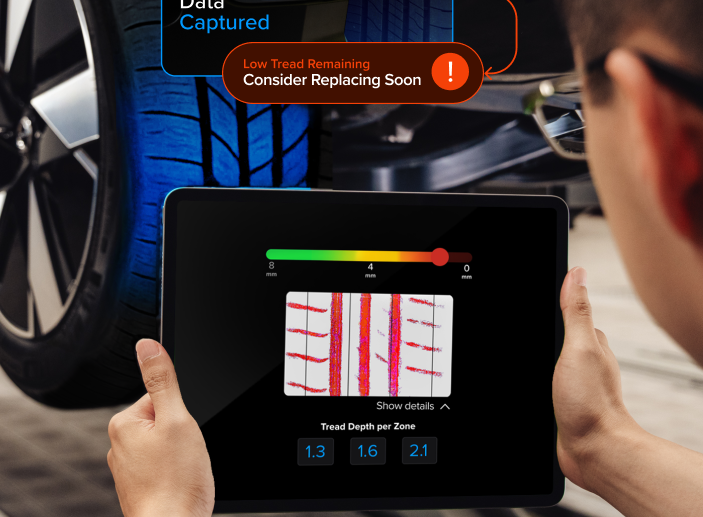
The Rotten Details About Expired Items on Supermarket Shelves
Keeping expired food products off supermarket shelves is a process in which all retailers are engaged. When customers do business with a store, either in-person, for curbside pickup, or for home delivery, they want to know that the retailer they choose is doing everything possible to keep expired products out of their orders. What can retailers do to meet this demand? For example, effective barcode scanning solutions are excellent choices to manage expired product removal workflows.
Currently, expired product removal workflows are not efficient
The processes retailers use to keep expired products off supermarket shelves are remarkably inefficient and inconsistent. Spot checking shelves and performing rotation make store associates fully responsible, which leads to errors and slower stocking. Even in the best circumstances, it is unrealistic for retailers to think they can get the level of commitment and detail-orientation necessary to catch an expired date on every can, bag, box, and carton when workers stock, rotate products and face the store.
Consumer Reports proved this. When they sent shoppers to scan shelves for expired products in 24 stores, they found out-of-date products on shelves in nearly two-thirds of them – some items as long as seven months past the sell-by date. When Consumer Reports asked a major grocery chain what procedures it has for removing expired products from shelves, they were provided with a disturbing non-answer. “We want to ensure that there are no more outdated products on the shelf,” they said, “and that the store associates are more diligent in rotating the stock properly in the future.”

When new retail shopping habits become routine
Until now, the legal consequences of leaving expired products on shelves have not been significant. US federal law does not require a manufacturer to put an expiration date on a product. In fact, under US law, baby formula and baby food are the only products that can’t be sold after it expires. State governments are free to regulate the selling of expired goods, and many do. Some states have filed and settled lawsuits with major retailers for selling expired food and medications.
Consumers are also presented with several different terms, such as “best before,” “best if used by,” “sell by,” “freeze by” or “expired by.” The manufacturer provides the dates to give consumers an idea of how fresh the product is, not whether it is dangerous or not. From the consumer’s perspective, even if a product is still good to use after the date stamped on it, they are unlikely to want to take a chance. As far as most consumers are concerned, an item with a date in the past stamped on it is not one they wish to buy and they will avoid it altogether.
The real risks of not having an efficient expired product removal workflow
While the legal risk of leaving expired items on supermarket shelves is minor, consumer sentiment and the ability to share bad experiences can give stores reputations for not removing expired items.
Anyline recently surveyed 500 retail customers in the US about their shopping experiences. When asked how frequently they encounter an item on the shelf that is past its expiration date, more than one in three survey respondents reported sometimes or frequently. Ecommerce retail solutions developer Nick Morley asserts that as many as 2% of in-store retail customers abandon purchases. This may seem like an acceptable number until you consider a typical brick-and-mortar store that generates revenue of $1 million per week may lose as much as $1 million annually to sales abandonment. Leaving expired products on shelves likely contributes to these losses. If optimizing the expired product removal workflow was to cut in-store sales abandonment in half, the investment in improving this process would pay for itself many times over in a short period of time.
Before the internet, bad shopping experiences would be shared with a customer’s social circle and maybe with a store manager. Today, there are online bloggers who watch these issues closely. Depending on their number of followers, they can share experiences with potentially tens of thousands of people.
“I thought expired items at grocery stores only happened in huge cities. But as I learned from the comments on the post, it’s also happening in small towns and suburbs. The only explanation: greed. We’re not talking about small “mom and pop” stores that are barely making it and maybe don’t have enough staff to check everything. We’re talking big national chains.
I don’t know who is at fault. Some items are stocked by the store employees, and others by suppliers. But it’s ultimately the responsibility of the stores to monitor what’s on their shelves. I believe the stores are gambling that we’ll buy this stuff without noticing. This saves them a lot of money: expired food must either be returned (if the supplier will accept it) or trashed. But they’re not even putting it on sale in most cases – they’re just selling it at regular price and hoping we won’t notice.
The blog went on to provide a detailed account of a first-hand shopping experience at a large grocery chain where shoppers documented dozens of expired products on shelves. These types of pieces combined with research like a recent study from The Manifest that revealed 17% of consumers will walk away from a brand after just one bad experiences and 59% will abandon a brand after multiple incidents paint a clear picture about the urgency to improve the efficiency of this workflow.
Create an optimized expired product removal workflow using existing resources
The easiest, most affordable way for grocers to create an extremely accurate, efficient workflow for removing expired items from supermarket shelves is to provide store employees with smartphones equipped with an optical character recognition (OCR)- and barcode scanning-enabled mobile app. With Anyline scanning technology integrated into a mobile app, workers can eliminate human error from the process by quickly scanning each item and immediately identifying alphanumeric expiration dates and flagging the item for removal from the shelf. The enterprise-grade scanning technology captures codes at a wide range of distances and angles and in variable lighting conditions. Retailers can furnish workers with smart devices or institute a “Bring Your Own Device” (BYOD) policy and enable employees to use their own smartphones for checking expiration dates. This dramatically lowers TCO and is particularly valuable during high volume shopping periods when there may not be enough company-furnished smart devices available
When grocers improve their expired product removal workflow, they can mitigate sales abandonment, ensure positive experiences with their brand, empower workers to improve job performance and increase consumer confidence. Take a moment now to download a demo and see for yourself how Anyline can help.
Contact us to see the full results of the 2021 Anyline US Consumer Shopping Survey referenced in this post.



